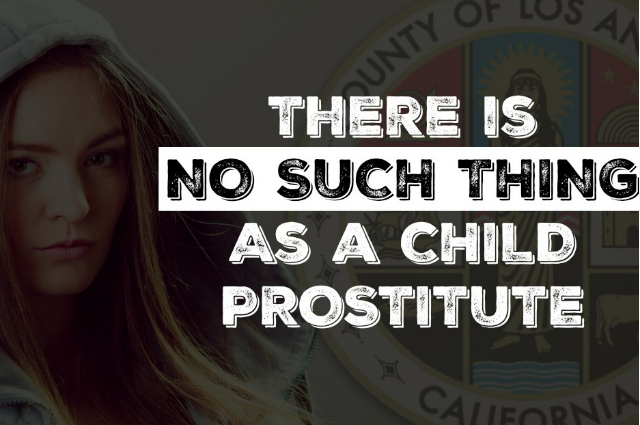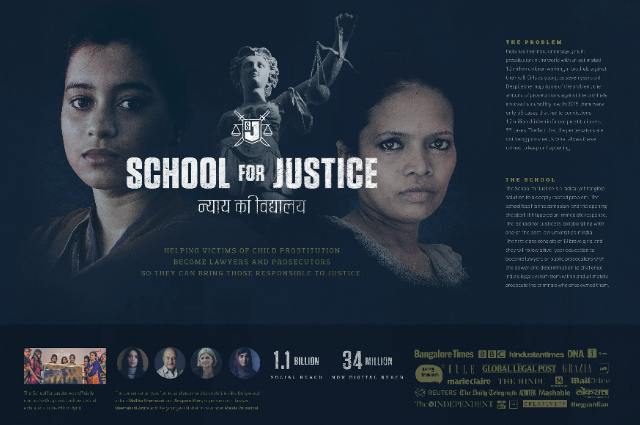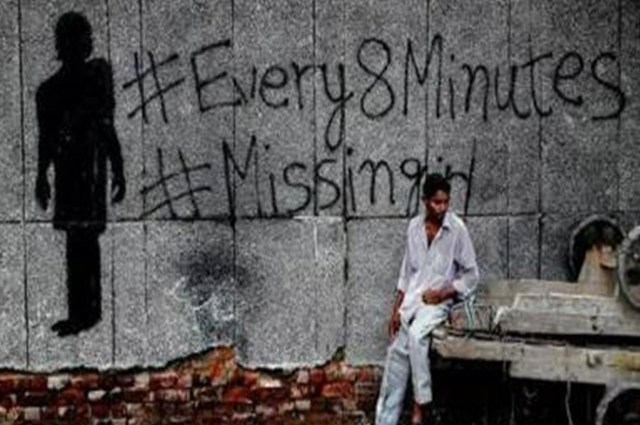ABSTRACT
“The Justice system is predicated on a reality that supports traditional masculine understanding of the world where those who are not male are forced to live within a system of male beliefs and behaviors.” (1)
The sentence that appears above draws the concern raised by honorable Madam Justice Bertha Wilson on an issue that has given restless years to the mankind to fight the battle not only against a crime that punctures the safety and security of children but also against the evils of patriarchy that has rooted these filths.
Childhood is a phase where children are free from both economic and general responsibilities that an adult might owe to fulfill his duty. It is a general notion that is regarded globally that such a period must also preserve the sexual innocence of children so that they grow accordingly. The child of this global ideal is distinguished by age as being less than 18 years of age, but has no specified gender, although tends to be referred to as ‘he’ (2). When a crime is committed against a child, it tends to leave such mark which may be eradicated physically but the scars do not leave from the mind and they often face PTMS. This essay explores the reasoning behind the inability of existing legislation to tackle child trafficking. It further assesses the issues involved for children trafficking and analyzes the current situation, makes a comparison of International attempts to curb the issue, and try to answer the query raised by honorable Madam Justice Bertha Wilson.
CHILD PROSTITUTION: THE INTRODUCTION
Child Prostitution means the sexual exploitation or abuse of children for commercial purposes (3). It is an abhorrent violation of the rights that are guaranteed to the children and is undoubtedly the worst form of a crime against children. It is cruel to the degree that it evaporates the sensitivity of their childhood, deprives them of their basic rights, and casts havoc on their present and future. The crime is severe not because the target is the most vulnerable group but because it tremor the edifice of their childhood, exploit them for commercials benefits and bring disdain to their lives (4).
CHILD PROSTITUTION: INDIA
The percentage of children living in our country is 19 percent if compared to that of worlds. It inalienably characterizes the nation's job in turning into a place of refuge for children in this ever-evolving culture. The country along with these lines furnishes its children with a large group of rights-essential while revering the significance of their assurance, care, and improvement in its general approaches, plans as well as destinations. The impact of such a despicable crime against children is greater than our understandings. In India, it is the failure and negligence on the part of citizens; be it anybody, that it causes a stark misfortune on children and paralyzes their development. The situation is only devastating as the stats show there is only a rise in the number of children missing and in the cases of trafficking. It indicates that the worsening of the situation that reflects the menaces of poverty in our country. According to the National Crime Records Bureau study (5), the common cause of such trafficking was forced marriages, child labor, domestic help, and sexual exploitation, among others. As there are many kinds of work that children are forced to do, considerable differences exist. Many of them are different because of the nature of work and that is why the severity grows exponentially as the types differ (6). These wide markets only attract children to exploit them as the condition of victims is devastating in our country. In Upendra Bakshi v. State of UP (7), it was found that the inmates of Agra protective Homes were living in inhuman and degrading conditions in blatant violation (8) of Article 21 (9). According to the Human Rights Watch Report 1995 (10), 20 percent of Bombay’s brothel population is composed of girls who are younger than 18, at least half of whom are HIV positive. Many are brought to India as virgins and returned to Nepal with HIV. Cases of child abuse and prostitution have also recently surfaced in two of India’s major beach resorts (11). The situation has absorbed the vulnerable groups and continues to target them but there are constant tussle going between the crime and the law.
THE BATTLE THAT LAWS FIGHT
Despite the constitutional protection guaranteed under Article 23 (12) which evokes the prohibition of trafficking in human beings, forced labor, and all forms of exploitation, the graph only seems to be hiking. In the case of Raj Bahadur v. Legal Remembrancer (13), the court held that the traffic in women for immoral purposes is prohibited under Art. In parlance with the constitutional provisions, the criminal law likewise gives some assistance to the unique laws instituted to control child prostitution by assaulting the wellspring of this fiendishness. Section 366A (14) makes the procreation of a minor girl from one part of the place to another is punishable (15) and section 366B (16) makes importation of girl from the foreign place a criminal offense. Section 372 (17) and 373 (18) makes selling and buying of young girls a criminal offense of serious nature and scripts the detainment of 10 years along with fine can be awarded. As these crimes existed in former years of independence also, a law (Suppression of Immoral Traffic in Women and Girls Act, 1956) was brought to ensure the protection of women and girls from such crime but it just was not sufficient enough to curb the ever reprehensible crime against children. However, efforts are being made and advanced through various steps such as setting up different children's homes (19).
CHILD PROSTITUTION: THE INTERNATIONAL PARADIGM
There are numerous types of trafficking yet the most obvious and far-reaching is the commercial exploitation of children. Instances are evidence that children are trafficked across the globe from Asia. According to the UN Special Rapporteur on Violence Against Women (20), there are many nuances of trafficking that has evolved and generated all forms be it luring the parents by money or by coercion, these practices have only fractured the bones of righteousness. The prostitution of children is intently attached to life on the streets. Numerous adolescents flee from troublesome circumstances at home. They may become involved in prostitution through loneliness and emotional vulnerability as well as homelessness and the need to survive (21).
There is surely no association between the laws and paces of child prostitution in countries with high and low rates of child prostitution. Even though Thailand had 29 laws to fight such crimes, yet it had the highest rate of crimes against children. Most of the countries have a law against such crimes but the reason why such laws have been ineffective in reducing the rates is the inability to keep track of missing people, make sufficient arrangements for victims of sexual offenses, etc. The reason why Thailand saw a rise in the numbers has a direct connection with poverty. In the late 1900s, rural poverty in Thailand increased due to export-led policies for industrial growth (Lau, 2008) (22). Impoverished families were desperate to produce cash currency necessary to survive. These conditions put children at risk of entering the sex industry; either by compulsion or by choice (23). According to the United Nations, Office on Drugs and Crime Report 2019 showed a record number of a rise in cases of trafficking. Women and girls remain a major target as they constitute a vast majority amounting to 35 percent of those trafficked.
Even the United States has faced the issue of child trafficking arising from the various sex tourist barging in the country and exploiting the wealth of children and their childhood (24). It has become an issue that has marked is prevalence almost all across the globe. The situation only worsens if we see at the reason of children involved in such activities if we move towards Italy or Nepal. In Italy, children 5 to 14 years of age have been found prostituting in Sicily. Some were prostituted because their parents could not pay off their debts (25). Enforcement and corruption have always been the root cause of almost every problem that has existed in India. And so is in the case of child prostitution. In Cambodia, for example, bribery at all levels of law enforcement, including the judicial systems (Perrin et. Al., 2011), discourages the enforcement of laws against child prostitution due to the steady income derived from bribes (Rafferty, 2007). In several documented cases, parents shave actively solicited clients for their children. In Munni v. State of Maharashtra (26), Honorable Court elaborated on the need for the establishment of a Child Welfare Committee to ensure the safety and security of child victims. The whole problem of child trafficking leading to their sexual and commercial exploitation requires a deeper and greater discussion. It is not only a challenge to the judicial system of these countries but also a challenge to the ones who have to fight poverty along with other evils.
POVERTY: THE BITTER TRUTH
Poverty often contributes to the sale of children for prostitution (27). It is because of the sheer inability to generate money to ensure that the daily needs are at least met, in most of these cases, they trick children and their parents into and share with them information to earn money in quick time. It is a natural phenomenon that poverty makes a person more vulnerable and due to the lack of options left, and to fight responsibilities, carry the burden of life and loved ones, they choose the wrong way to make their daily needs met. It is the children of the poor and marginalized communities who are often trafficked to be forced into such evil practices (28). The lack of awareness also plays an important role that these traffickers exploit especially when it comes to the uneducated poor living in unimaginable conditions. That is wherein our country, there is a critical requirement for convergence and usage of comprehensive child protection mechanisms. Indian children are exposed to multiple vulnerabilities (29). With thousands of children still working in block furnaces, building destinations, and agrarian land, trafficking for the sake of forced child labor and the precedence of their exploitation has constantly been a challenge. More than anything, it demands the efforts of the government to be supplemented by public awareness.
CONCLUSION
Human trafficking, as it is examined, affects everybody. A legitimate universal methodology towards battling it is the need of great importance. The section manages the degree of the human dealing exchange inside and over the fringes of the nations and the job of International Law and other related laws, for example, International Humanitarian Law and Human Rights Law. Human dealing or the cutting edge servitude, as today is known has been flourishing regardless of the authorization of conventions and laws in fighting this composed wrongdoing by the United Nations and every other partner who has been a piece of the convention.
We need to understand that there is a failure on our part both as a citizen and as a responsible person of society when we see a child working in industries and not in schools. Do we need to ask ourselves why these children work in most appalling conditions?
There is a possibility that the answer would vary depending on various states but what is more important than all these states must have an absolute plan to deal with it in any manner. It requires a nuanced study on all the errors committed till date, has a detailed analysis of the issue at hand and then begins the diagnosis with recognizing the severity of the problem It also becomes equally important for all the legislators to be aware of the complexity and ensure they provide a simplistic but effective approach to deal with it by the means of law. In conclusion, what it mandates is the sheer opportunity to all the people to be more aware and informed about the existence of such menaces which is influenced by the simple concept of supply and demand. Appropriate measures must be taken to ensure that the protection must extend its arm to the poorest as well.
. . .
END NOTES:
- Margaret Wright, Judicial Decision Making in Child Sexual Abuse Cases, UBCPress 2007.
- Convention on the Rights of the Child 1990 art. 1.
- A legal framework about Child Prostitution, LEGALSERVICEINDIA (last accessed on 06, July,2020 at 12:45PM), legalserviceindia.com.
- Draft Declaration and Agenda for Action, World Congress against Commercial Sexual Exploitation of Children at 2, Stockholm, Sweden (August 27-31, 1996).
- Ministry of Home Affairs, National Crime Records Bureau (2018), NCRB (last accessed on 09, July, 2020 at 14: 34 PM) ncrb.gov.in
- International Labor Organisation, ILO (Last accessed on 08, July, 2020 at 15: 50 PM) www.ilo.org.
- Upendra Bakshi v. State of Uttar Pradesh and Anr. (1983) 2 SCC 308.
- supra note 3.
- INDIAN CONST. art. 21.
- Rape for Profit, Trafficking of Nepali Girls and Women to India’s Brothels, Human Rights Watch (1995).
- Dorianne Beyer, Child Prostitution in Latin America, In Forced Labor: The Prostitution Or Children 32, 37 (Jaffee & Rosen, eds., US Department of Labor 1996).
- INDIAN CONST. art. 23.
- Raj Bahadur v. Legal Remembrancer AIR 1953 Cal 522.
- Indian Penal Code 1860 Sec. 366A.
- supra note 3.
- Indian Penal Code 1860 Sec. 366B.
- Indian Penal Code 1860 Sec. 372.
- Indian Penal Code 1860 Sec. 373.
- Gaurav Jain v. UOI (1997) 8 SCC 114.
- United Nations Special Rapporteur on Violence Against Women 1994.
- Eva J. Klain, Prostitution of Children and Child- Sex Tourism: An analysis of Domestic and International Responses, Office of Juvenile Justice and Delinquency Prevention, NCJRS (Last accessed on 09, July, 2020 at 09: 13 AM) www.ncjrs.gov.
- Lau, C., Child prostitution in Thailand. Journal of Child Health Care, 12(2), 144-155 doi: 10- 1177/1367493508090172.
- ibid.
- The Paedo File, ECPAT Newsletter (ECPAT International, Bangkok, Thailand), Aug. 1996, at 4, 4.
- Vitit Muntarbhorn, End Child Prostitution, Child Pornography and Trafficking of Children for Sexual Purposes ECPAT, Country Reports (last modified Aug. 2l, 1996).
- Munni v. State of Maharshtra (2011).
- supra note 23.
- Child Trafficking, CRY (Last accessed on 10, July, 2020 AT 19: 56 PM) www.cry.org.
- supra note 29.



